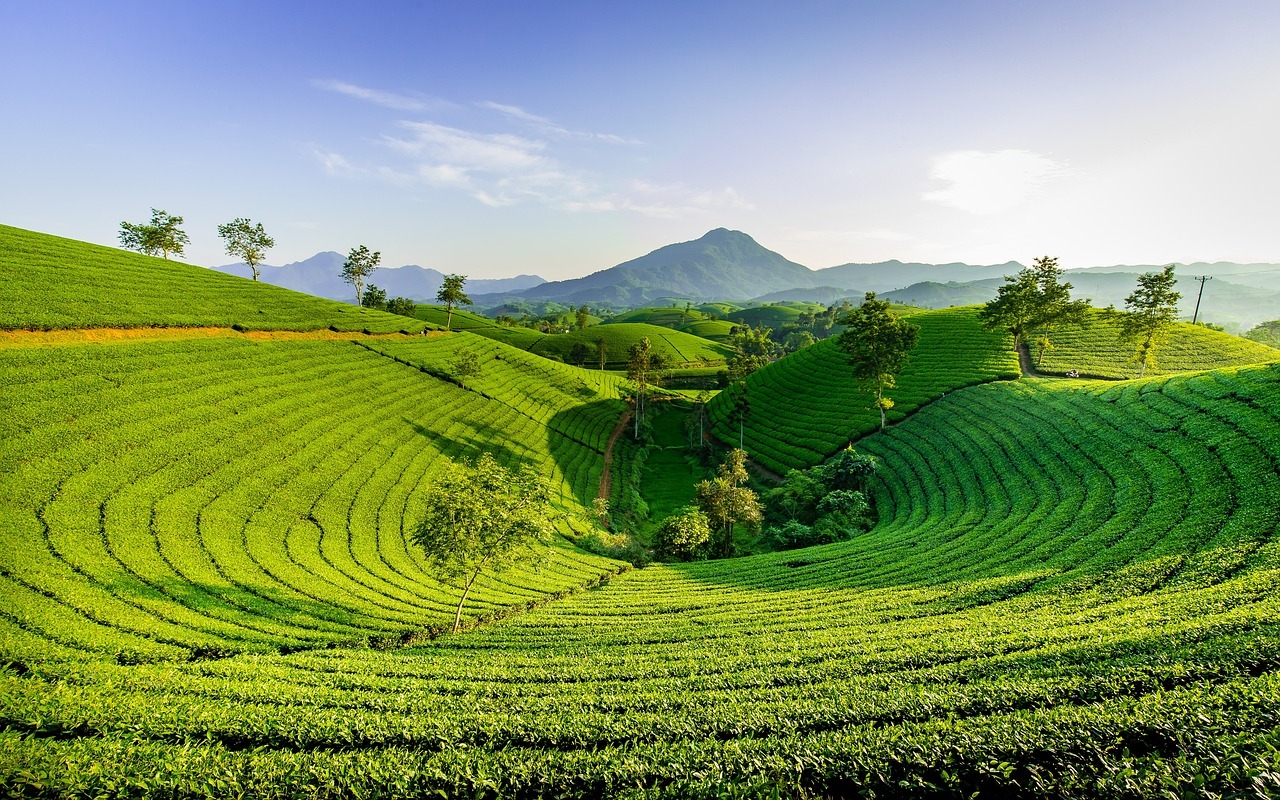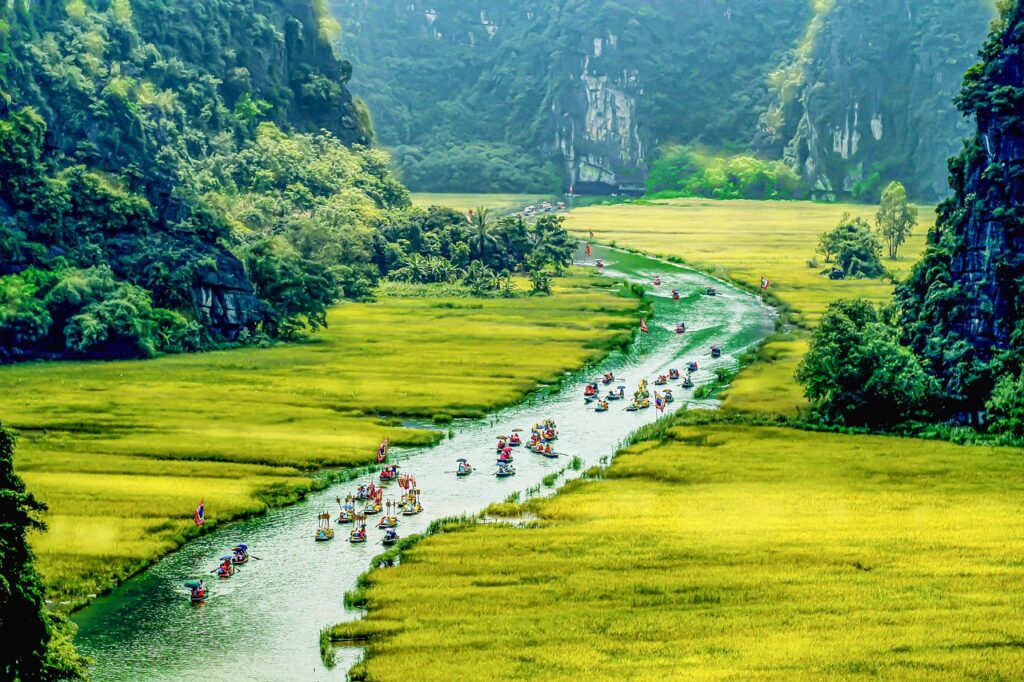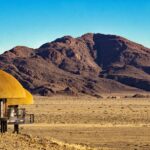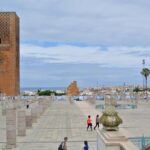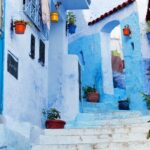Vietnam Guide
When we think of Vietnam, we all think of the sublime Halong Bay, its enormous rocks mysteriously rising from the water, and junks. But Vietnam has much more to offer!
Famous for its lush green mountains, succulent street food, and vibrant nightlife, Vietnam is one of Southeast Asia ‘s gems . Depending on your destination, you’ll be captivated by the beauty and uniqueness of its landscape, with unique adventures like tasting water snails or cycling through rice paddies. Be warned, this will be an unforgettable trip!
Presentation
Capital : Hanoi
Official language : Vietnamese (in Vietnamese: Tiếng Việt)
Population : 97,709,844 inhabitants (2020)
Currency : Dong
National Day : September 2
Bordering countries : Cambodia, Laos, China
Area : 331,236 km²
Things to do and see in Vietnam
After several very difficult decades, Vietnam opened up to tourism in the 1980s. An increasingly popular destination, the dragon-shaped country fascinates with its ability to maintain its authentic culture while embracing globalization. Here are some ideas for discovering one of the best-preserved countries in Asia .
Discover Vietnam by motorbike

Everyone will tell you, crossing Vietnam by motorbike is certainly an activity not to be missed during your stay. Provided you have an adventurous soul, perhaps a daredevil too. It’s the craziest and most fun way to discover the different sites of the country. One of the best circuits to absolutely try is the one that leaves from Ho Chi Minh City to Hanoi . You will feel like you are in an anthill with the millions of motorbikes that circulate on this road. We told you, you have to be a bit of a daredevil…
Moreover, as the motorbike remains the most used means of transport in Vietnam , local residents adopt it to travel back and forth throughout the country. You will have no trouble finding a dealer of this vehicle to set off to discover Vietnam in all its splendor. If you have an adventurous and intrepid soul, riding a motorbike in the cities sometimes in the rain during rush hour will certainly please you!
Taste the country’s famous culinary specialties
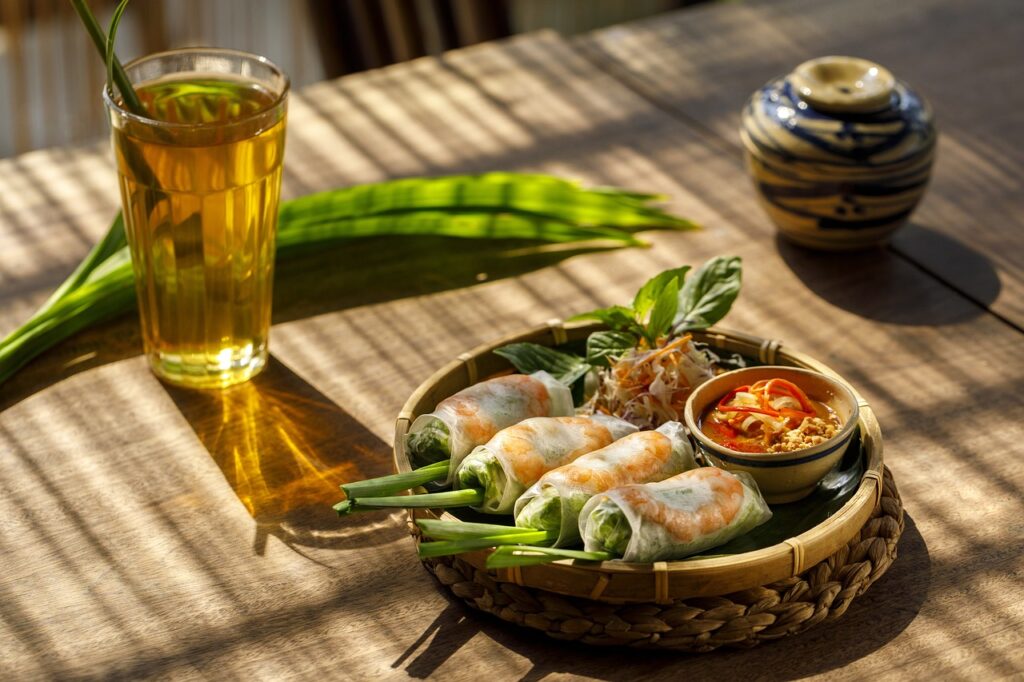
After discovering the motorcycles loaded with cages of chickens, it’s time to eat to recover from your emotions:
To continue the adventure on your plate, why not try some snail-based dishes? The Vietnamese are indeed crazy about these little creatures. And you’ll find a little bit of them in every dish in every restaurant across the country. For your information, Vietnamese water snails are cooked on-site, and gourmets can choose the cooking method that suits them best. So it’s up to you to find the way you want to enjoy your snails while enjoying this convivial moment shared with friends!
More classic but delicious is the Banh Mi , a Vietnamese sandwich with a European flavor. In fact, it reflects a perfect blend of traditional and Western tastes. Its main components are baguette bread, cheese, mayonnaise, pâté, pork sausage, coriander, carrot, daikon, and cucumber. An excellent alternative for those who are not tempted by gastropods.
Conquer Hanoi, the capital of Vietnam
While Hanoi is renowned for its various heritage sites, pagodas, and temples, it is also a unique city born from the fusion of European and Asian cultures. In addition to cultural visits, there are a few activities you should do to get in tune with the capital.

Hanoi ‘s street food caters to all tastes and budgets. Did you know that Hanoi topped The Daily Telegraph’s list of the 17 best cities in the world for eating? Hang Buom, Ta Hien, Dong Xuan, Ly Quoc Su , and Nha Tho are the main streets where you’ll find a variety of traditional and exotic dishes and a street-food atmosphere. Plus, the tiny plastic chairs in front of the restaurants invite you to share this moment with the Vietnamese and expats who have adopted this lifestyle!
Hanoi ‘s street performances are an institution. Discover talented folk groups, student bands, and street magicians in the capital who are unique! In addition to being free, these artistic performances allow you, in a way, to get to know the local population. One of the most popular shows is the water puppet show.
Hanoi ‘s morning market is a must-see for the senses. Starting at 2 a.m., vendors and shoppers from all over the region gather here. From flowers to vegetables, freshly caught fish to meat, you’ll find everything here. It’s also the perfect spot for street photography enthusiasts. The frenetic pace of life makes for some beautiful shots.
Hanoi ‘s train street , which connects Ho Chi Minh City, is a must-see. It’s lined from right to left with houses and shops, but the train runs right through the middle. Trains pass through this residential area of the old historic center. There are even small restaurants, and locals cook on their doorsteps. The buildings seem frozen in time, as the area is likely to be completely redesigned in the future for safety reasons. Fortunately, there are few people passing through during the day. Warning: During this walk, it is imperative to listen to the directions given before a train arrives and to stay well behind the red line.
Saigon, back to the past
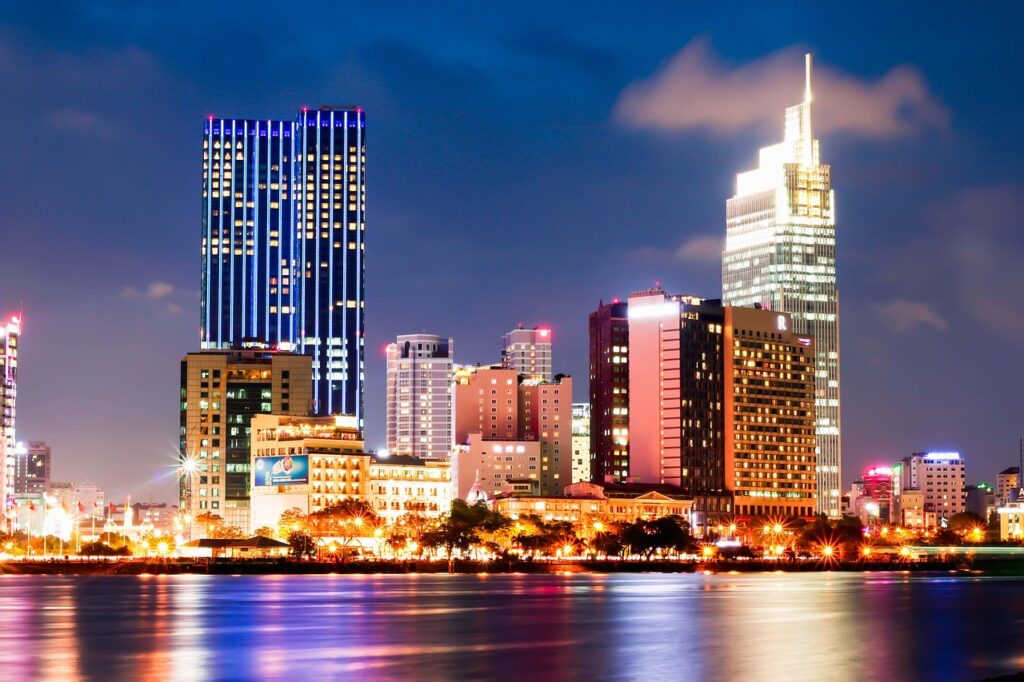
This is the other must-see city in the country. Although its current name is Ho Chi Minh City , it is still often called Saigon by locals. A legendary city of literature, it has retained a large part of its colonial center with its Palace of Fine Arts, the Opera House and the Central Post Office. Take a tour of the famous Cholon district, known as Chinatown with the Opium dens under the colonial empire. The traditional pagodas are still there and it is the perfect place for shopping. Capital of the country until the 1950s, Saigon has retained its economic dynamism as you can see during a visit to the business district. Finally, do not miss going for a walk along the river and towards the Mekong Delta.
A homestay in Sa Pa
You’ve probably heard that staying with locals in Sa Pa is one of the experiences to try during a trip to Vietnam . All globetrotters and travel enthusiasts have been there, and they can testify to the beauty of the experience. Located in the north of Vietnam , Sa Pa attracts with its unique and authentic landscape. Famous for its hiking and trekking trails, this place is the promised land for landscape lovers. Starting with the Fansipan Mountain circuit where lush mountains and rice terraces open their arms to you.
Sa Pa is also the perfect destination to experience the hospitality of the Vietnamese people. With a smile on their faces, the locals are eager to share their culture with tourists. This is an opportunity to learn more about Vietnamese cuisine and gain an in-depth insight into the lives of the Vietnamese people.
Getting to Ninh Binh or Ha Long Bay on land in Vietnam
Take a junk and explore Ninh Binh , also known as Ha Long Bay on land, for a peaceful and exotic moment! Part of the UNESCO World Heritage , this bay remains one of the most beautiful natural sites in Vietnam. Visiting this site remains a must-do to include in your trip. Located between sea and land, Ha Long Bay is ideal for strolling aboard a traditional boat or exploring its waterfront paths. It owes its reputation to its karst rocks that emerged from the depths of the sea and form an even more fascinating landscape seen from above. After playing at discovering their shapes, you can also see the villages of the sea gypsies, a people whose way of life is disappearing. Don’t leave without exploring the hidden temples.
Visit Hoi An, the city of lanterns
Known for its lively streets, stalls, and shops, Hoi An is one of the most picturesque towns in Vietnam . Its buildings bear witness to the country’s glorious past, the most famous of which is the Japanese Covered Bridge, which once connected Chinatown to Japantown. Other buildings with unique architectural styles take you back in time. But the MUST-SEE is to attend the Lantern Festival, which gives the town its nickname.
Every lunar month, Hoi An hosts this unique event during which locals light lanterns before returning them to the water. These lotus-shaped lanterns are intended to pay homage to ancestors, one of the cornerstone traditions of Vietnamese culture.
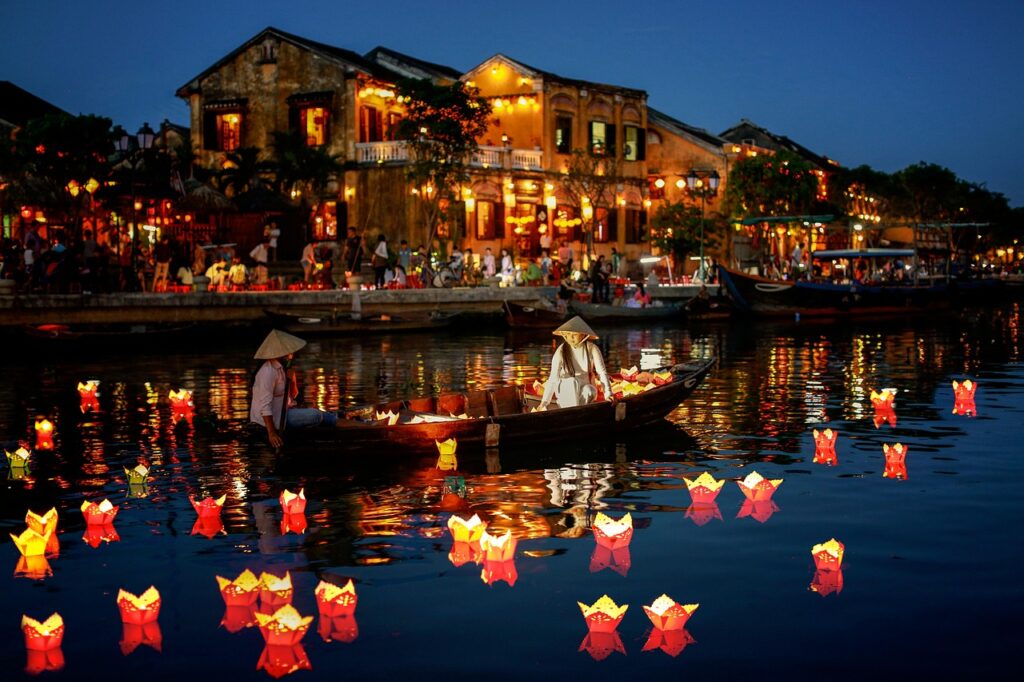
Explore the treasures of Ha Giang
Continuing your journey further north, you arrive at Ha Giang , one of the typical rural provinces of Vietnam . One of the most beautiful too. Its mysterious hills immerse the traveler in the daily life of many Vietnamese farmers. The markets are also an opportunity to discover the many ethnic groups that populate the region. From the old district of Dong Va to the palace of the Vuong family , passing by the valley of Sung La and its buckwheat fields, this province with its many facets is undoubtedly the most magical to visit.
The region also offers a variety of hiking trails, perfect for adventure and thrill seekers. Among them, the Happiness Road, which connects Dong Van to Meo Vac, remains one of the most famous. Winding along the green mountainside, this route is certainly the most dangerous, but remains the most popular with seasoned adventurers. From the top of this road, you can admire the Nho Que River and the wooden houses that line it.
You’ll marvel at the contrast between the hustle and bustle of Ha Giang Market and the apparent calm of Hoang Su Phi’s rice terraces . It’s this striking contrast that makes a day spent in Ha Giang Province unique.
What is the best time of year to visit Vietnam?
Between the monsoon and the trade winds that hit Vietnam every year, it’s best to choose the season of the year when you’re going to visit the country. To fully enjoy it, we recommend planning your trip during the dry season, which runs from October to April. Beyond these months, you’ll find yourself facing torrential rains, a daily occurrence for many Vietnamese.
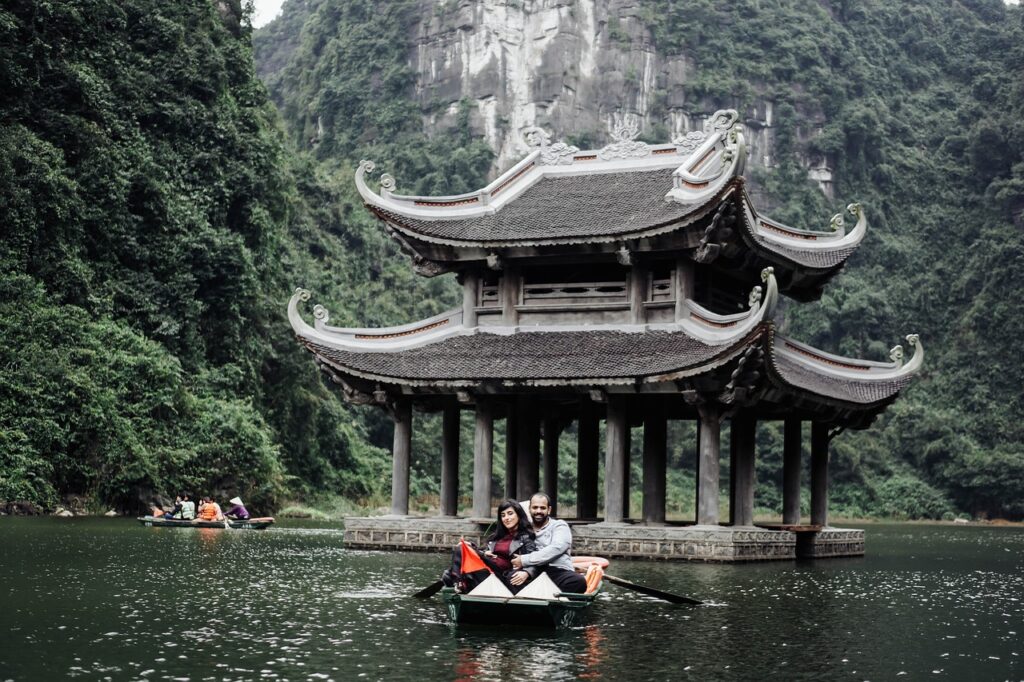
What documents are required to visit Vietnam?
To explore Vietnam and its local culture, you must have a visa and a valid passport. These documents are essential for visiting the country. If your passport is about to expire or if you need a visa for a long or short stay, you can contact agencies specializing in this area. Allow at least one month for the administrative procedures. Note that French nationals traveling for less than 15 days are exempt from visa requirements.
What clothes should you pack for a trip to Vietnam?
For your trip to Vietnam , choose clothes suitable for a dry climate. This way, you avoid packing clothes that won’t be of much use to you. Lightweight clothing, comfortable clothes, and comfortable shoes are essential. Also, don’t forget to bring suitable clothing in case it rains during your trip. This can happen even if you’re exploring Vietnam during the dry season.
Which accommodation should you choose when traveling to Vietnam?
To help you find accommodation in Vietnam , first consider setting a budget and the type of experience you want. You’ll be spoiled for choice among the country’s various star-rated hotels. These places are perfect if you want to focus on comfort and modernity during your stay. On the other hand, if you want an authentic and unique experience, a homestay is a must. Not only will you be close to the locals, but you’ll also learn more about their customs and traditions.
With this information, you are now ready to set off to discover Vietnam and its riches!

